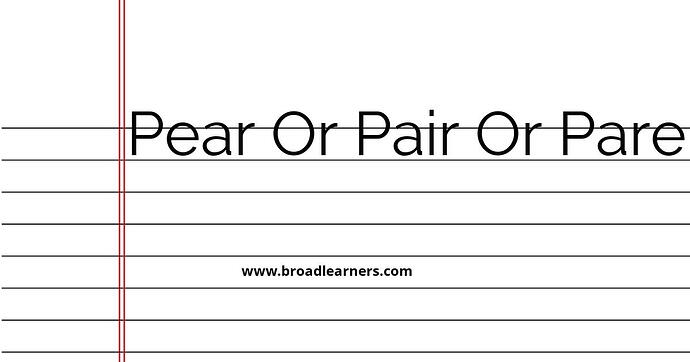'Pear', 'pair', and 'pare' are commonly confused words in English grammar. Understanding the difference between 'pear', 'pair', and 'pare' is important to use them correctly in written and spoken English.
'Pear' is a noun that refers to a sweet, juicy fruit that has a rounded shape and typically a green or yellow skin.
'Pair' is a noun that refers to two identical or similar things that are matched or used together.
'Pare' is a verb that means to trim or cut off the outer layers of something, usually with a knife or other sharp tool.
Let's take a closer look at the meanings and usage of 'pear', 'pair', and 'pare'.
| 'Pear' | 'Pair' | 'Pare' |
|---|---|---|
| The word 'pear' is a noun that refers to a type of fruit. | The word 'pair' is a noun that refers to two identical or similar things. | The word 'pare' is a verb that means to trim or cut off the outer layers of something. |
|
|
|
To remember the difference between 'pear', 'pair', and 'pare', it can be helpful to associate each word with its specific meaning:
- 'Pear' - think of the fruit that is sweet and juicy.
- 'Pair' - think of two things that are matched or used together.
- 'Pare' - think of trimming or cutting off the outer layers of something.
Here are some examples of correct usage:
- I ate a delicious pear for dessert.
- She bought a new pair of sunglasses.
- He used a knife to pare the apple before making a pie.
Remembering the correct usage of 'pear', 'pair', and 'pare' will improve your grammar and communication skills.
